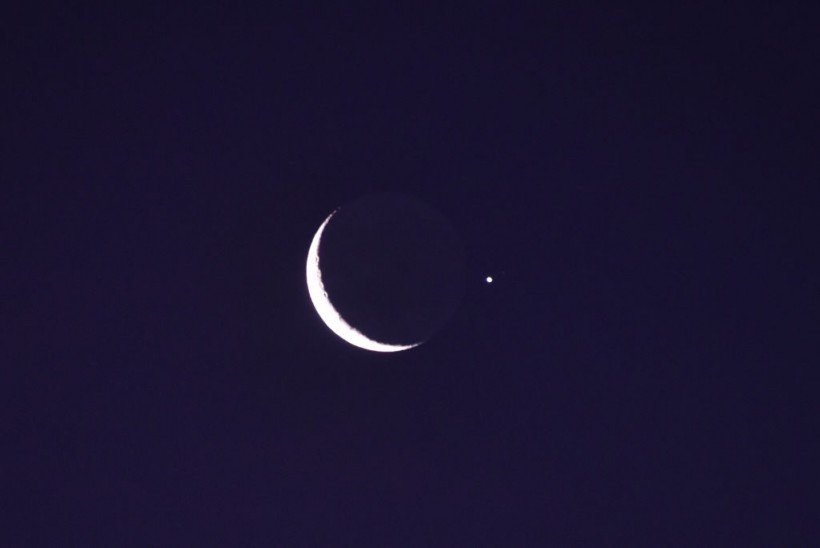Skywatchers are in for a sweet surprise this Valentine's Day as Jupiter and the Moon will appear to be a cosmic couple kissing in the night sky.
Cosmic Couple To Have Close Encounter on Valentine's Day
According to NASA, the cosmic couple will sit by southwestern skies roughly an hour after the sun sets on Valentine's Day.
The gas giant and the Crescent Moon will be apart by a few finger widths. However, their actual distance will actually be equivalent to 227 million miles. The duo will apparently be closest to each other by 1:05 a.m. ET.
When it is closest to the Earth, Jupiter will be roughly 365 million miles away. Its farthest point will have a distance of 601 million miles. On Thursday evening, it will just be slightly more than 480 million miles away from Earth.
Roughly 13% of the Moon's surface will be shining in the night. This will come as the Waxing Crescent Moon will rise in the night sky.
The Aries constellation will also brightly shine while it will be sitting by the crescent Moon's northeast. This constellation belongs to the 12 that make up the zodiac. It is situated within the northern celestial hemisphere.
However, Jupiter will be outshining Aries and be the night sky's brightest star.
While this event is not a rarity, the fact that it is set to happen on Valentine's Day makes it quite special.
The last time Jupiter and the Moon had a close encounter was on December 16, 2023. Back then, which also marked the year's final full Moon, the 10-day-old Moon had an illumination of 86% as the close encounter was made.
ALSO READ: Moon Plays Crucial Role in Life on Earth, Could Potentially Determine What Makes A Planet Habitable
How To Catch the Cosmic Couple
Viewers may watch the cosmic conjunction with their naked eye. However, using binoculars to view it will put both Jupiter and the Moon in the same view field.
To catch a glimpse of Jupiter, one must focus on the bottom curve and then on the southwest. The brightest star visible will be Jupiter.
Though the sight will be visible all over the world, they will look closer over Australia and Singapore due to an optical illusion, which will make the Moon look bigger when it is near the horizon, compared to being situated higher in the sky.
Waxing Crescent Moon Phase
The Moon is currently in the Waxing Crescent Moon phase, which follows the New Moon and goes on until half of the visible surface of the Moon gets illuminated in the First Quarter Moon.
"Waxing" refers to the growth of the Moon, while "crescent" implies its sickle and curvy shape.
The next lunar phase the Moon is set to undergo would be the First Quarter Moon, or Half Moon. By then, the Sun's rays will be illuminating roughly 50% of the lunar surface.
RELATED ARTICLE: 'Blue Moon' Explained; Here's How the Supermoon Got Its Name and Why It Occurs
Check out more news and information on Space in Science Times.















